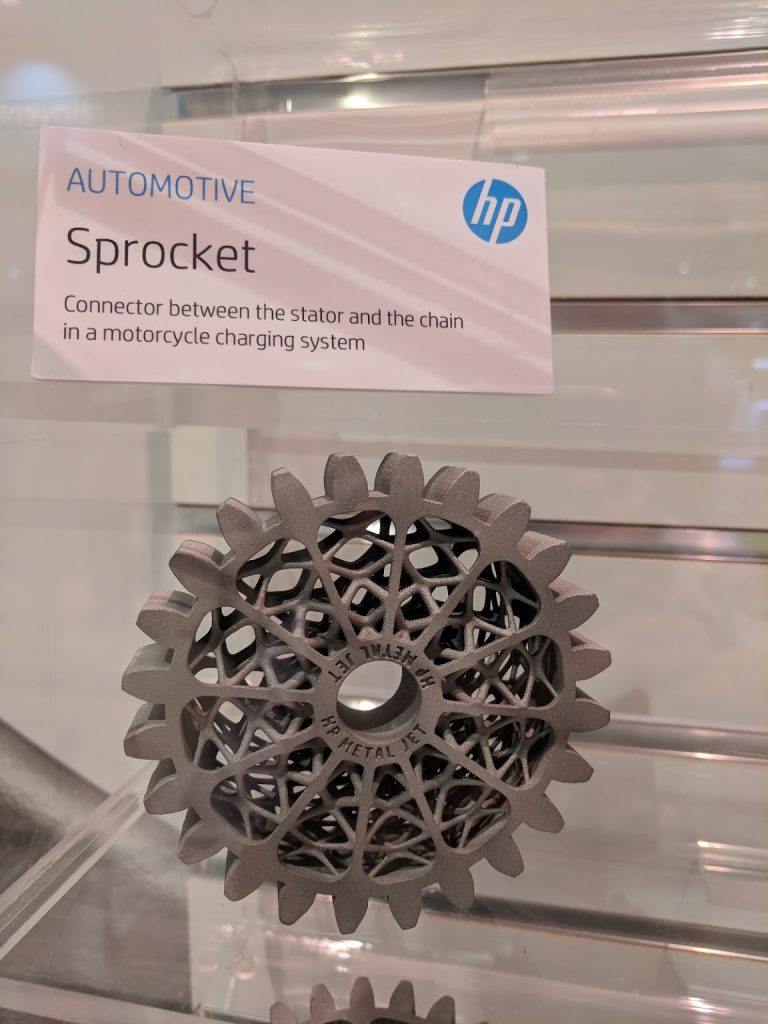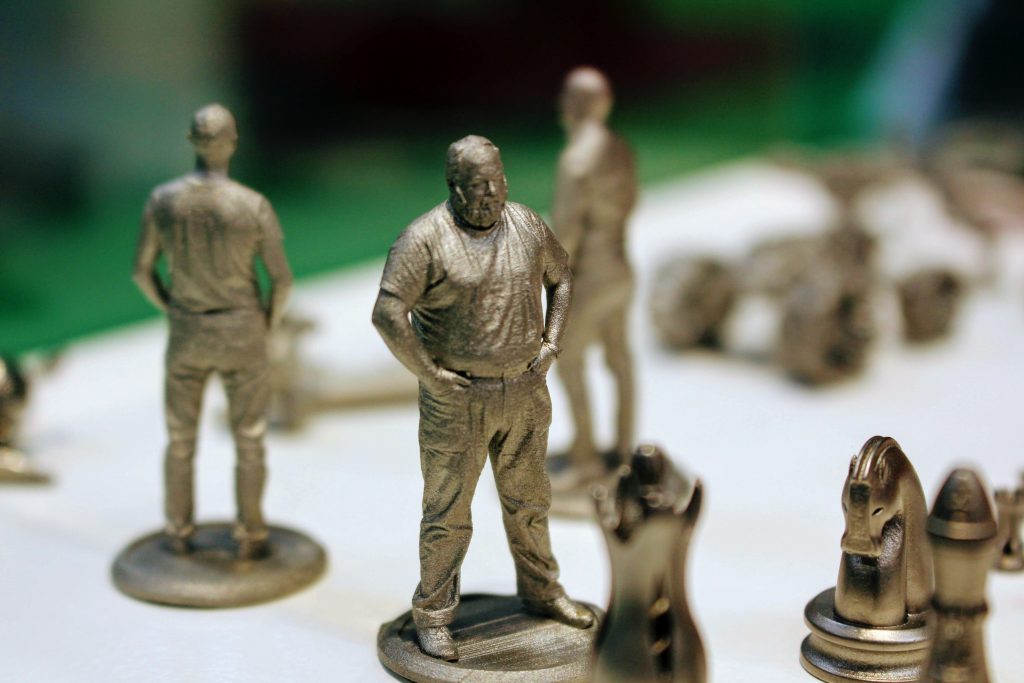In a transaction that values metal 3D printing company Desktop Metal at $2.5 billion, the Massachusetts-based enterprise will list on the NYSE. Proceeds from going public are anticipated as $575 million, funds that CEO Ric Fulop says will be used to drive internal growth but also growth via acquisition.
3D printing is not a homogeneous technology. ASTM defines seven categories, and within these categories, a further distinction is possible by materials and machine use. So far, Desktop Metal is publicly active in two areas of the metal additive manufacturing landscape – Metal Filament FDM and Binder Jetting.
Active within the Metal Filament FDM sub-category are companies including Markforged, BASF, The Virtual Foundry, Apium and Triditive. The process is multi-stage, a green part is produced using conventional FDM 3D printing and must then undergo debinding and sintering in a furnace.
In the Binder Jetting additive manufacturing market, participants include Digital Metal, 3DEO, and ExOne. Both HP and Stratasys have metal 3D printing systems in development. The HP Metal Jet 3D printer is most likely to be a Binder Jetting system that uses metal injection molding (MIM) powders like others in this category. In comparison to the grade of metal powder used by LPBF systems, MIM powder is less expensive and has a more extended history.
So what does the Desktop Metal transaction mean for the wider additive manufacturing industry? I asked several experts for their perspective on the move and comment on the underlying forces of reshoring manufacturing, supply chain flexibility, and distributed manufacturing.

Arno Held, Chief Venture Officer, AM Ventures
This is a very bold move from Desktop Metal in very uncertain times but I think that is the right one for the fast-growing unicorn. Taking this step will show how much investors are convinced that AM is the way out of the current crisis. It will bring new funds into our industry and – as a result – will help everyone to achieve the next levels of innovation and turning AM into a real mass manufacturing technology. In the present situation, the timing of this step is even more critical than before, and my fingers are crossed for Ric and his team that they succeed.
Generally on reshoring and distributed manufacturing: The past half-year has shown impressively how vulnerable globalized supply chains are and how much distributed and additive manufacturing can help to tackle these challenges. Once the global economy begins to recover from the recession, companies all over the world will start to realize that the way out of this leads through innovations in both products and production and this will result in a strong boost in the widespread use of industrial AM technologies. From the feedback I receive from our portfolio companies, who all seem to benefit from the recent developments, this is already starting to happen and the general outlook is already very optimistic.
Matt Sand, President, 3DEO
This is exciting news for the industry as a whole, and further evidence that metal additive manufacturing is coming into its own as a viable fabrication technology. AM has already made a transformational impact on prototyping and low-volume production. The convergence of new printers and enabling technologies are creating tremendous disruptive potential for even the highest volume metal parts production.
In concert with the maturation of technology and business models, macro forces are at work creating a once-in-a-generation restructuring of supply chains. Trade wars and COVID have exposed major weaknesses in today’s extended, complex supply chains. AM is perfectly positioned to answer the call from industry to be the ultimate flexible, distributed, derisking manufacturing method.

An April study by the Society of Manufacturing Engineers found 25% of U.S. manufacturing professionals were planning to change their supply chains in response to the pandemic, and 3D printing was their top choice for tech investments, along with robotics, so it’s clear there is growth ahead for our market. That’s because 3D printing gives manufacturers adaptability and resilience in the face of uncertainty, as we’re seeing with Stratasys customers like General Motors and BAE Systems. The pandemic didn’t create this trend – it is merely helping to accelerate it. We see the longest runway for growth in manufacturing applications and the largest value pool in 3D printed polymers, so we’ll be introducing new technologies for the polymer segment of additive manufacturing to significantly grow our addressable market. To be clear, there is no silver bullet additive manufacturing technology, material, or application, and no leader today across all major segments. Market leadership will come from providing a comprehensive solutions set, including multiple 3D printing technologies, supported by a global go-to-market and service infrastructure. Stratasys is well-positioned to be that leader for 3D printed polymers.
Christian Lönne, CEO, Digital Metal AB
As pioneers in metal binder jetting we are very optimistic and strongly believe that binder jetting will shape the future for many industries. The high IPO valuation mentioned indicates that the market believes metal binder jetting has a huge potential and Desktop Metal is doing a great job in promoting the technology. It will be interesting to follow the process. There is a lot of work to be done still. It’s not just a question of productivity. Part precision and process stability are equally important and key drivers for customer value creation and technology adaptation, especially for serial production. On that note, we are happy that Digital Metal is in good stable hands with the world’s leading metal powder manufacturer, with more than 70 years of knowledge of vital process parameters for binder jetting!

John Hartner, CEO, ExOne
ExOne welcomes all of the attention new competitors are bringing into the binder jet 3D printing space we commercialized in 1998. Together, Desktop Metal, HP, and GE are helping to drive awareness of the incredible speed, sustainability, and innovation benefits that binder jet 3D printing has to offer manufacturers.
While we are extremely optimistic about the growth prospects for 3D printing, and binder jetting overall, our long experience in this sector, and ongoing work with customers adopting binder jetting for production applications, tells us that the industry CAGR of 25-30% is absolutely within reach.
The ExOne team is also confident that we will remain the market leaders in the segment by continuing to innovate, advance the technology, and partner with our customers. In 2019, we had revenues of more than $53 million, with a backlog in excess of $38 million as of June 30, 2020, and our business has a strong foundation of global customers generating recurring revenue.
What’s more, our proven binder jet systems currently 3D print more than 20 materials, with single-alloy metals making up half of our lineup. With exciting materials such as aluminum fast-tracked for qualification, we believe binder jetting will transform the face of production manufacturing of metal, making it faster, smarter, and more sustainable.
Who is leading the 3D printing industry? Let us know by making your nominations for the 2020 3D Printing Industry Awards.
Featured image shows Desktop Metal 3D printed parts undergoing sintering process. Photo via Desktop Metal.



